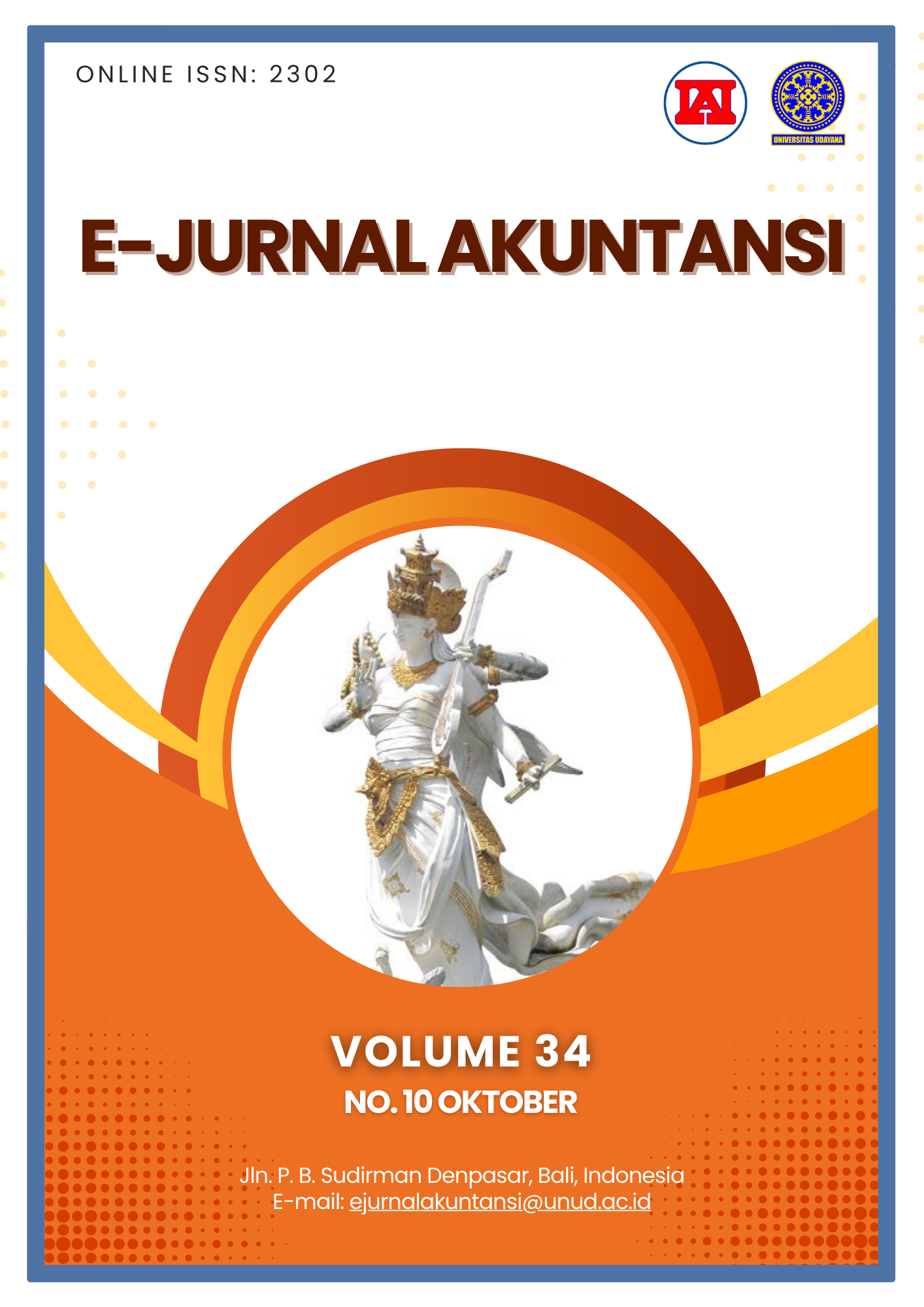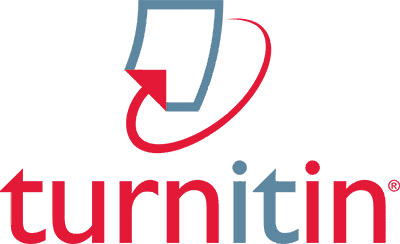Evaluating the Efficiency of Tax Liability Calculations under PP No. 23/2018: A Tax Planning Perspective for PT. X
Abstract
This study examines the tax planning strategies implemented by PT. X in 2023, focusing on the extent to which these strategies enhance efficiency by minimizing taxes payable. The research employs a descriptive qualitative approach, utilizing a case study model that centers on a single taxpayer, PT. X. Data collection involves documentation, with the company’s financial reports serving as the primary source of secondary data. The analysis involves calculating the tax payable under applicable tax regulations and comparing it to the tax liability in the absence of a business split. This comparison allows for an evaluation of the effectiveness of the tax planning measures adopted by the company. Findings indicate that the tax planning strategy of undertaking a business split aligns with the spinoff provisions outlined in Law No. 40/2007. This approach has demonstrated tangible efficiency in reducing tax liabilities, as the newly formed entities can leverage the favorable tax rate provided under PP No. 23/2018. The results underscore the strategic value of adhering to regulatory frameworks to achieve tax efficiency.
Downloads
References
Baulkaran, V., & Jain, P. (2024). Behavioral Biases of Financial Planners: The Case of Retirement Funding Recommendations. Journal of Behavioral Finance, 1–14. https://doi.org/10.1080/15427560.2024.2305412.
Budiarso & Wantah. 2023. Tax Planning Preferences of Business Forms Case Study on Individual Taxpayers in Bitung City. Journal of Accounting and Auditing Research “Goodwill” 14 (1).
Cieślik, A., & Gurshev, O. (2024). Relative factor endowments, foreign direct investment and tax planning of multinational firms: an empirical investigation into cross-country data. Baltic Journal of Economics, 24(1), 30–57. https://doi.org/10.1080/1406099X.2023.2296738.
De Vito, A. (2022). Labor protection, tax planning, and capital investment: evidence from small-sized enterprises. Applied Economics Letters, 31(4), 330–337. https://doi.org/10.1080/13504851.2022.2133891.
Dewi, NL, Apriliawati, Y., Akuntansi, J., & Bandung, PN (2021). Comparative Analysis of Government Regulation Number 23 of 2018 and Income Tax Article 25 for the Efficiency of MSME Tax Burden (Case Study on CV Jifast, CV Rizqi Utama, Hayu Jalan Creative Tour). Indonesian Accounting Literacy Journal, 1(2), 257–266.
Eichfelder, S., Jacob, M., Kalbitz, N., & Wentland, K. (2024). How Do Corporate Tax Rates Alter Conforming Tax Avoidance? European Accounting Review, 1–33. https://doi.org/10.1080/09638180.2023.2287725
Firmansyah, RA, & Wijaya, S. (2022). Nature and Enjoyment Before and After the Tax Regulation Harmonization Act. Journal of Taxation and State Finance (PKN), 3(2), 343–359. https://doi.org/10.31092/jpkn.v3i2.1645.
Herwanto, TA, Tinangon, JJ, & Budiarso, NS (2021). Analysis of Tax Planning Implementation in Efforts to Efficient Income Tax Burden (Study at PT. Pasifik Petra Indonesia). Journal of Accounting and Auditing Research "GOODWILL, 12(2), 235–251.
He, Z., & Tang, J. (2021). Deleveraging policy, leverage management, and firms’ aggressive tax planning. Asia-Pacific Journal of Accounting & Economics, 30(3), 594–618. https://doi.org/10.1080/16081625.2021.2003212.
Irsan, M. (2023). Application of Tax Planning in Minimizing Income Tax Debt at PT. Asam Jawa Medan 2020. SALMAN Journal (Social and Management), 4(2), 71–86. http://jurnal.fisarresearch.or.id/index.php/salman/issue/archive.
Khan, M. A., & Tjaraka, H. (2024). Tax justice and understanding: MSME compliance with Tax Regulation No. 55/2022 in Surabaya, Indonesia. Cogent Business & Management, 11(1). https://doi.org/10.1080/23311975.2024.2396042
Lee, J., Jung, S., & Cho, H. (2024). Managerial ability and tax avoidance adjustment toward the optimal level. Spanish Journal of Finance and Accounting / Revista Española de Financiación y Contabilidad, 1–29. https://doi.org/10.1080/02102412.2024.2380954.
Li, X., & Zhou, T. (2024). Bank branching and corporate tax avoidance: evidence from a quasi-natural experiment of banking deregulation in China. China Journal of Accounting Studies, 1–24. https://doi.org/10.1080/21697213.2023.2300287.
Lorato, T., Sendaba, Y., & Tadesse, T. (2024). Tax evasion attitude and taxpayers’ perception of government legitimacy: evidence from Southern Ethiopia. Cogent Economics & Finance, 12(1). https://doi.org/10.1080/23322039.2024.2371944.
Mardiasmo. 2019. Taxation. 2019 Edition. Yogyakarta. Andi.
Ministry of Finance Information Center. 2023. Press Release on the 2023 State Budget: The Government is Committed to Increasing Productivity in the Framework of an Inclusive and Sustainable Economic Transformation. Downloaded at2023 State Budget Press Release: Government Committed to Increasing Productivity in the Framework of Inclusive and Sustainable Economic Transformation (kemenkeu.go.id)June 2, 2024.
Pohan. 2013. Tax Management Tax Planning Strategy and Business. Jakarta. PT. Gramedia Pustaka Utama.
Republic of Indonesia. 2013. Government Regulation Number 46 of 2013 Concerning Income Tax on Income from Business Received or Obtained by Taxpayers Who Have Certain Gross Turnover. [Online]. Available :PP No. 46 of 2013 (bpk.go.id).
Republic of Indonesia. 2018. Government Regulation Number 23 of 2018 Concerning Income Tax on Income from Business Received or Obtained by Taxpayers Who Have Certain Gross Turnover. [Online]. Available :PP No. 23 of 2018 (bpk.go.id).
Republic of Indonesia. 2008. Law Number 36 of 2008 concerning the Fourth Amendment to Law Number 7 of 1983 concerning Income Tax. [Online]. Available:Law No. 36 of 2008 (bpk.go.id).
Republic of Indonesia. 2000. Law Number 42 of 2009 Concerning the Third Amendment to Law Number 8 of 1983 Concerning Value Added Tax on Goods and Services and Sales Tax on Luxury Goods. [Online]. Available:Law No. 42 of 2009 (bpk.go.id).
Republic of Indonesia. 2021. Law Number 7 of 2021 Concerning Harmonization of Tax Regulations. [Online]. Available:Law No. 7 of 2021 (bpk.go.id).
Republic of Indonesia. 2007. Law Number 40 of 2007 Concerning Limited Liability Companies. [Online]. Available:Law No. 40 of 2007.
Rasidin, R., & Sulaiman, S. (2023). Income Tax Planning in Tax Saving Efforts at PT. Golden Rooster Indonesia. Baashima: Journal of Digital Business, Accounting, Entrepreneurship, and Management, 1(1)(1), 37–48.
Ronika, ZC, Hidayah, DF, Febriansyah, A., Yunus, SM, Saifuljihad, I., & Widiastuti, NPE (2024). Tax Planning by Utilizing PP No. 23 of 2018 (Case Study of PT X in East Java). Journal of Accounting and Taxation, 24(2), 1–7. http://jurnal.stie-aas.ac.id/index.php/jap.
Saba, Z. (2024). Climate risks and corporate tax shields. Journal of Sustainable Finance & Investment, 14(4), 787–814. https://doi.org/10.1080/20430795.2024.2389144.
Sani, A. A., Kibiya, I. U., Al-Absy, M. S. M., Muhammad, M. L., Bala, H., Khatoon, G., … Garba, S. (2024). A dynamic panel data approach of corporate tax avoidance and debt financing in Nigeria. Cogent Business & Management, 11(1). https://doi.org/10.1080/23311975.2024.2316283
Sastrodiharjo, I., & Mukti, A. H. (2024). Exploring the intricacies of tax planning: a novel insight from the Indonesian context. Cogent Business & Management, 11(1). https://doi.org/10.1080/23311975.2024.2348709
Sidarta, D. (2021, October 22). TAX PLANNING! Strategy for Splitting Business Entities to Reduce Tax Burden to be Paid.
Sekaran & Bougie. 2017. Research Methodology for Business. 6th Edition Book 1. Jakarta. Salemba Empat.
Sekaran & Bougie. 2017. Research Methodology for Business. 6th Edition Book 1. Jakarta. Salemba Empat.
Setiawan, Eric Virly. 2019. Tax Planning Efforts Through Legal Entity or Business Form (Case Study at UD XYZ). Journal of Accounting Science and Research e-ISSN: 2460:0585.
Sulaeman & Rasidin. 2024. Income Tax Planning in Tax Saving Efforts at PT. Golden Rooster Indonesia. Journal of Digital Business, Accounting, Entrepreneurship, and Management (Baashima) ISSN: 2988-1056. 1 (37-48).
Suryawadi, E. (2021). Analisa Kinerja Perusahaan Dalam Rangka Persiapan Spin Off Unit Usaha Syariah Pt. Asuransi Adira Dinamika. Jurnal Tabarru': Islamic Banking and Finance, 4(2), 499-511.
Tanuwijaya, S., Widjaja, PH, & Henny, H. (2022). Analysis of the Implementation of Final Income Tax Based on PP 23 of 2018 at PT. Xyz. Multiparadigma Accounting Journal, 4(2), 531–539.
Thomya, W., & Ritsri, U. (2024). Audit committee characteristics and tax planning: evidence from the ago-industry in listed companies in Thailand. Cogent Business & Management, 11(1). https://doi.org/10.1080/23311975.2024.2309186.
Wiafe, P. A., Armah, M., Ahiakpor, F., & Tuffour, K. A. (2023). The underground economy and tax evasion in Ghana: Implications for economic growth. Cogent Economics & Finance, 12(1). https://doi.org/10.1080/23322039.2023.2292918.
Ye, Y., & Li, W. (2024). Digital regulation and multinational tax avoidance: evidence from Common Reporting Standard. Applied Economics Letters, 1–5. https://doi.org/10.1080/13504851.2024.2306188
Zain. 2007. Tax Management. 3rd Edition. Jakarta. Salemba Empat.
Zhao, W., & Liu, H. (2024). Do political connections pay? Evidence of corporate payroll tax planning in Chinese firms. Applied Economics Letters, 1–6. https://doi.org/10.1080/13504851.2024.2407995.
Zhou, X. (2024). The Impact of Investor Sentiment on Corporate Tax Avoidance from a Behavioral Finance Perspective. Emerging Markets Finance and Trade, 1–13. https://doi.org/10.1080/1540496X.2024.2377985

This work is licensed under a Creative Commons Attribution-ShareAlike 4.0 International License.

















